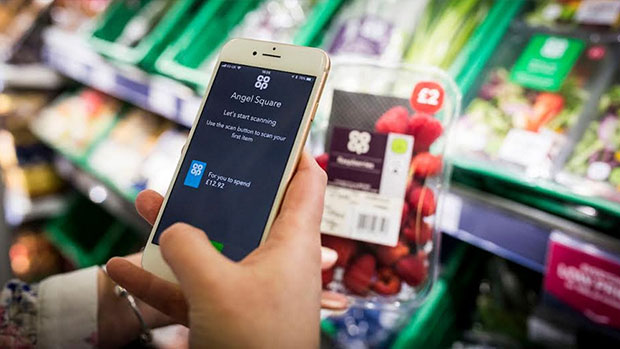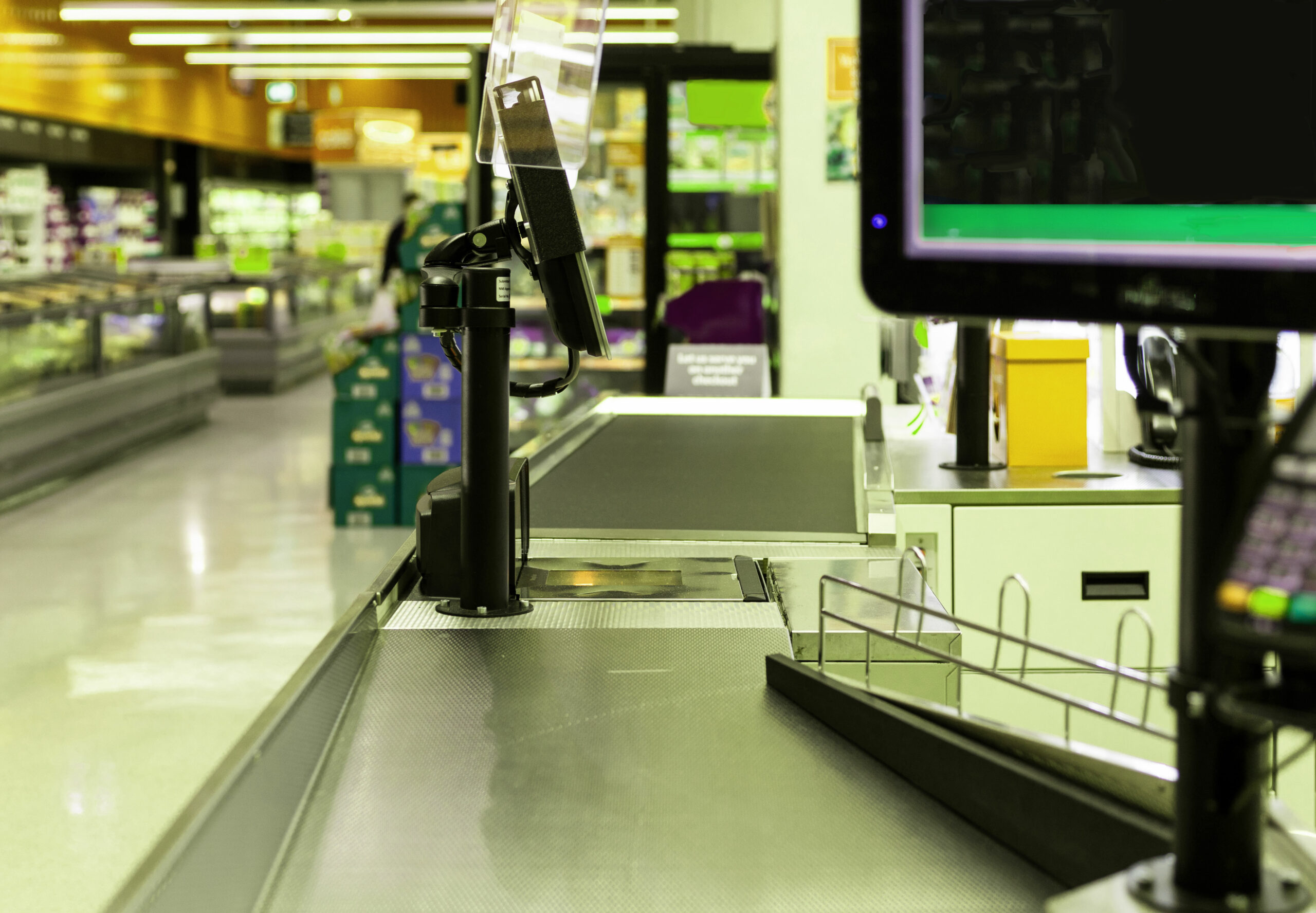Scan & Go technology has seen wide adoption in the United Kingdom, Europe and the United States and is more recently being trialled by Australian retailers.
This technology works in two different ways. Customers can download an application on their phone and then use their phones to scan products on their journey through the supermarket. They then only need to finalise their transaction through Apple Pay or at a checkout and simply walk out of the store.
For those who might want to use their phone when shopping there is also the option to collect a handheld scanner from a bank at the front of the store. Customers dock their scanner on their trolley and scan the products as they go.
Scan & Go creates a quick and frictionless shopping experience for customers. It removes a major pain point, particularly for big trolley shoppers, in that customers do not have to unpack their shopping and then re-pack to checkout.
We are seeing a growing number of supermarkets use this solution to speed up transaction times. Retailers with minimal and constrained store footprints are being enabled to free up space and help customers get out of the store with increased ease and comfort.
The burgeoning solution is also serving the budget conscious customer, allowing them to track their spend as they shop. As a result, retailers and team members are no longer wasting time and money voiding items at the end of the customer’s journey.
In CLX’s experience when using mobile applications retailers often overlook coverage issues, app functionality and quality check processes. When it comes to in-store devices more typical problems involve the technologies interface, voided items and quite often poor communication and signage on how to use it.
When customers use their phones as devices there is a 3-5% participation rate, which has remained unchanged outside of China over the past 5 years. On store provided devices industry best practice is reflected when retailers provide a choice average between 20-30%.
It’s important for retailers to know that implementing a successful Scan & Go solution is not just about the technology. Of course, this is fundamental, the technology must be fast, efficient, and easy to use from the day it goes live.
Retailer’s IT teams need to have strong communication with broader business operations. The way they come together to iron out friction points within their front-end experience is ultimately what leads to worlds best practice.
To be truly successful retailer’s must pay special attention to their adoption strategy, their change management strategy and the end-to-end customer journey. The customer experience must be centred in the development of these solutions as retailers can easily make the mistake of being too technical in their approach.
With Scan & Go where retailers often fail is at the very entrance of the store where education and engagement must happen. It is important that customers understand the benefits to the new technology in addition to the ‘how to’ around its use. The best retailers are putting their service desks nearer to the Scan & Go unit, ensuring someone is always there to assist and train customers when things go wrong and drive uptake.
Equally, the exit, or checkout experience, must be thought through so that the Scan & Go customer is given the quickest and most seamless exit out the store. This will ensure they realise the full benefits that the Scan & Go technology can bring.
Integrity checks take place at the very end of the journey. Developing a suitable integrity policy around loss management warrants careful consideration. It needs to be implemented in a way that balances the new frictionless experience and ensures customers experience is not impacted.
We believe the immeasurable benefits that Scan & Go provides to retailers, team members and customers make it an invaluable solution in a checkout ecosystem. However, success requires careful implementation and a sustainable plan for training and retraining customers.
At CLX we are helping our clients implement solutions like Scan & Go. With our global network and experience we can help you implement your own Scan & Go technology to ensure maximum customer uptake and satisfaction.
Customers should be continually supplied with better frictionless options to shop and retailers need to consider the options they will provide to stay relevant and cost effective.
Contact us now to find out how can help your business become more efficient and competitive in this digital age.




